Notes From a Local Angler: Capital Region Fishing Hotspots
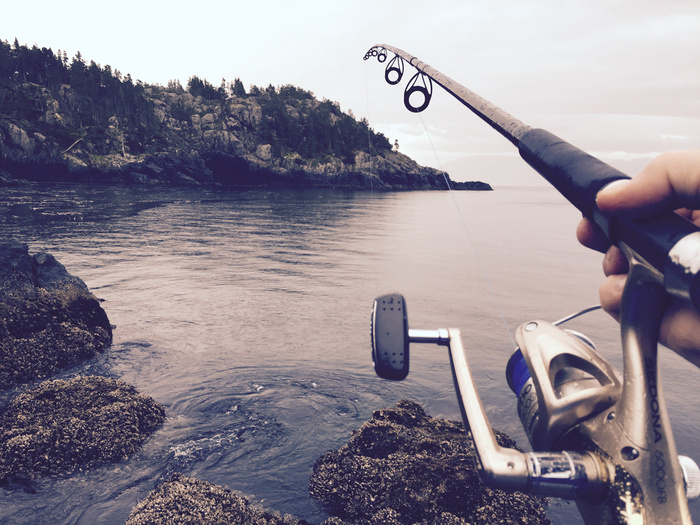
The Capital Region has an underrated reputation as a fishing destination. That’s what happens when the Adirondacks and its 3,000 waterways reside to your north, and the Catskills, the birthplace of fly fishing in America, are located at your doorstep.
In truth, however, the area between these two legendary locations is no slouch, either. Diversity is king in and around the Capital Region, from the numerous species available, to the varying sizes of our lakes, rivers, and reservoirs. No matter your fancy – perch or pike, shore or boat, family fun or tournament angling – there’s something for everyone within a short drive from home.
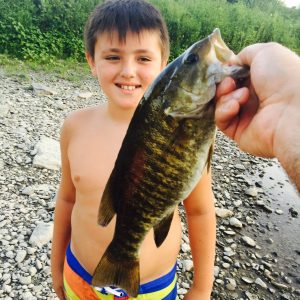
I’ve been fortunate to spend countless hours on some of these local gems. I come from a fishing family – my great grandfather used fishing as a primary source of food – and some of my greatest memories are of hazy afternoons spent casting from a dock or wading in a creek. Over the past 25 years, I’ve targeted dozens of species from shore, kayak, and motor boat.
Yet, I haven’t so much as wet a line in most of the waterways in our area. That’s how many opportunities there are in the Capital Region.
Let’s take a look at some of the options. I’ll provide commentary on some of my favorite memories – and some I’d like to forget – from a number of popular upstate waterways.
Albany County
Rensselaer Lake (Six Mile Waterworks): Pumpkinseed and largemouth bass are plentiful around the shoreline. Bigger bass, trout, and more are common for kayakers who can reach deeper and less-pressured water.
Washington Park Lake: Located in the heart of Albany, the entire lake is accessible from shore and holds a number of panfish – sunfish, perch, and anything else frying pan-sized – as well as some surprisingly big largemouth bass, carp, and pickerel.
For years, this lake has occasionally been stocked with fish from the Alcove Reservoir in Coeymans, NY. The Alcove is a drinking water source and is off-limits to fishing, but as any longtime angler will tell you, stories of enormous fish in the Alcove are common. They usually start with something like this:
My brother works for the DEC and he’s netted fish as big as …
Or …
I grew up across the street from the Alcove and used to sneak in. I once caught … 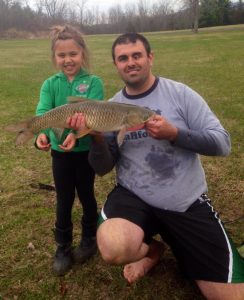
I have stories of my own. My grandfather may or may not have caught a 10-pound bass in the Alcove decades ago. And my father may or may not have caught a 4-pound perch there in the 1980s.
I’ve caught or seen some of these Alcove Reservoir fish in Washington Park Lake. The first cast I ever made into Washington Park Lake produced a 26-inch pickerel, and I once saw a carp as big as a preschooler swimming near shore.
One evening, I hooked a pike so big near the Washington Park Lakehouse that I jumped into some lily pads to grab it when my line broke but the stunned fish didn’t swim away. Unfortunately, the story does not end well. I sunk into muck past my knees, lost a sandal, and provided entertainment for about 75 people laughing from shore.
The fish got away, too.
Thompson’s Lake: This popular ice fishing destination is stocked annually with trout and also holds healthy panfish, bass, and pickerel populations. The lake has a public boat launch, and shore fishing is available at Thompson’s Lake Campground.
I grew up nearby in East Berne, NY and have spent more days than I can count swimming, fishing, kayaking and camping on this beautiful spring-fed lake. Most of my fishing here has been in the winter. It’s where I learned to ice fish and where I taught my kids to ice fish. Although it no longer matches the glory days when my dad claims to have filled a bucket with perch on every outing, more than a few fish pulled through the ice have ended up in my frying pan.
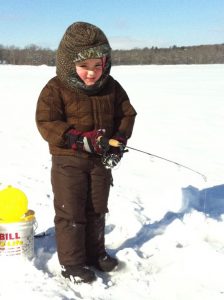
Most of the summertime trout are caught in the deep middle or near the surface before dusk. There are good numbers of bass and pickerel near the shorelines, especially in the weedy section opposite the boat launch. I had little luck on a recent afternoon near the weeds, though the fish are still there. After I took my final cast and prepared to paddle back to shore, I noticed a 5-pound bass just below the surface about two feet from my kayak. We looked at each other and it lazily swam away. Maybe next time.
Ann Lee Pond: Numerous pumpkinseed and largemouth bass can be found in and around the vegetation in this weedy lake. Shore fishing only.
Rensselaer County
Burden Lake: Shore fishing is limited to the areas off roads and bridges, but the abundant bass and panfish, including large perch, make it a worthwhile trip. Walleye and pike are rare, but trophy fish are possible.
Grafton Lakes State Park: The park has five lakes that hold numerous species and easy access via the shore or small boats and kayaks. The most popular choice is usually Long Pond.
Tomhannock Reservoir: Panfish, walleye, smallmouth bass, and carp are reported in good numbers and sizes. Shore fishing only from numerous pulloffs and access points. Permit required by the city of Troy.
Saratoga County
Saratoga Lake: The most heralded lake in the region with abundant and sometimes large bass, panfish, 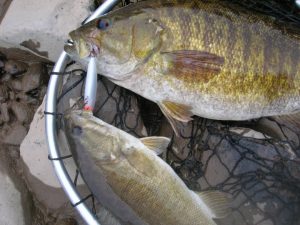 pike, walleye, pickerel, and more. The shoreline is mostly private, so launching a boat is the most viable option.
pike, walleye, pickerel, and more. The shoreline is mostly private, so launching a boat is the most viable option.
Lake Lonely: Nearby Saratoga Lake gets all of the attention, but this small lake packs a punch with the overall numbers and size of its largemouth bass and pike. The shoreline is mostly private but the Lake Lonely Boat Livery, located off Crescent Avenue in Saratoga, has a boat launch and boat rentals.
I had a historic near-miss one morning on Lake Lonely with legendary retired Times Union sports editor Dan Howley. We were targeting bass near the weeds when my line became tangled in my back-up rod in the rear of the boat.
It took a few minutes to sort out the mess. When I finished, I tossed out the tiny lure on my back-up rod to reel in the slack line. I cranked once and felt what seemed like a boulder on the other end. Except boulders don’t move. My rod was nearly ripped from my hand and the small aluminum boat began to rock and turn as the fish raced toward the deep. After a few tense minutes, the fish tired and floated gently to the surface. Finally, I got my first look at a pike nearly 40 inches long and more than 12 pounds. I slowly reeled it to the side of the boat and curled my hand around its meaty body.
Suddenly, the fish made a last, desperate charge and lurched its mouth of long, sharp teeth toward me. I dropped the fish into the water and Dan screamed to be careful. I panicked and attempted to bring the fish into the boat by lifting it with my rod, but when the entire fish was out of the water, its dead weight broke the line and the fish dropped onto the side of the boat. I grabbed it by the tail as it flopped into the water and began a frenzied shake. I held on for a few seconds before the fish wriggled from my hands and disappeared into the depths.
Kayadeross Creek: This historic brown trout fishery is stocked annually and has numerous access points throughout the county. It’s a popular destination for both fly fishing and spin casting.
Round Lake: Panfish, largemouth bass, and pike are common and can grow very large. Shore fishing is available, but kayaks and small boats are ideal.
Moreau Lake: Largemouth bass, pickerel, rainbow trout, and more are plentiful on the lake inside Moreau Lake State Park. Small boats can be launched for a fee from inside the park, and most of the shoreline is accessible on foot via state land.
Schenectady County
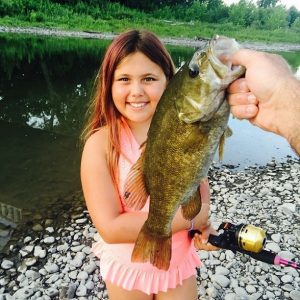 Collins Lake: Panfish are plentiful near the shoreline, while big bass and the occasional monster northern pike are not unheard of in this popular lake.
Collins Lake: Panfish are plentiful near the shoreline, while big bass and the occasional monster northern pike are not unheard of in this popular lake.
Iroquois Lake: This urban lake in Schenectady’s Central Park holds pumpkinseed, largemouth bass, and some large carp for the well-equipped angler.
Schoharie County
Schoharie Reservoir: Walleye are the main target, but trout, panfish, and more are plentiful. Registered row boats are allowed and much of the shoreline is on accessible state land.
Schoharie Creek: The northern end of the creek, above the Schoharie Reservoir, is home to numerous smallmouth bass and a healthy population of walleye. There are numerous access points in Schoharie, Schenectady and Montgomery Counties.
The Schoharie Creek is what I consider my “home” water. I fished here with my dad for the first time more than 20 years ago and have spent hundreds of hours walking its banks. I have too many stories to count, memorable and regretfully unforgettable.
The memorable:
- My children standing at my side in knee-deep water when I caught my first big Schoharie Creek
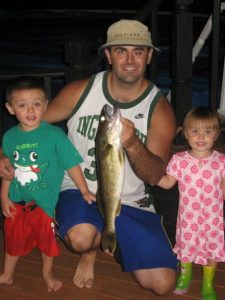 walleye. It weighed more than four pounds and is one of only two fish I’ve kept from the creek. It’s extra special when one of your favorite outdoor memories happens with your favorite people.
walleye. It weighed more than four pounds and is one of only two fish I’ve kept from the creek. It’s extra special when one of your favorite outdoor memories happens with your favorite people.
- Walking across a bridge with my dad one morning and catching the creek in just the right sunlight. We saw more than 50 carp basking under the surface of a large pool. Many of the fish were over 10 pounds. Roughly 500 pounds of fish, visible, in one spot, at one time – believe it or not.
- Wandering far from one of my usual spots, I found a magical hole in a remote part of the creek. It had everything a fisherman could dream of – shallow water that dropped sharply into deep water, a current with slack water on the edges, and a rock the size of a van in the middle of the hole providing cover for fish. The first time I looked into this hole from a ledge above, I saw a half dozen enormous bass, dozens of medium-sized fish, and three carp weighing more than 10 pounds each. Two of my biggest Schoharie Creek fish have come out of this hole, a 4-pound smallmouth bass and a 6-pound walleye.
The regretfully unforgettable:
- That magical hole I mentioned? I found it when I fell off of a cliff and landed on jagged rocks near the edge of the water. I nearly broke both legs and suffered multiple gashes on my arms and legs. I discovered the fish when I sat on a flat rock to nurse my wounds and glanced into the water. I later got lost, crashed through acres of thick brush, and limped four miles back to my car once I found the road. I suppose it was worth it in the end.
- I’ve lost hundreds of dollars in lures in the creek, mostly on the chunk rock that makes up the bottom. My most notable lost lure came when a huge bass broke my line near shore and took my Rapala crankbait with it. The lure cost $11 and I lost it on my eighth cast after taking it out of the package. That works out to $1.38 per cast, not exactly a great investment. For good measure, I got a few more looks at the lure when the fish jumped out of the water three times over the next 10 minutes as it tried to shake the hook from its mouth.
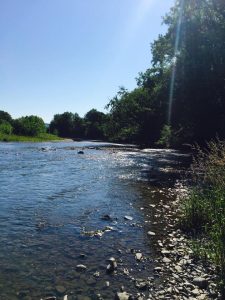 Other hotspots
Other hotspots
There are a few major fisheries that cover multiple counties in the Capital Region. The Hudson River, for instance, provides many great fishing opportunities between downtown Albany and Saratoga County. The river is most famous for its striped bass fishing in early spring, but many other species are plentiful throughout the year, including sizable bass, pike, catfish and more. There are more than 200 species of fish in the river, and the fishing can be outstanding from shore or by boats of all sizes.
Like the Hudson, the Mohawk River holds numerous species and is accessible from hundreds of points between Albany and Schoharie County. Boats and kayaks are ideal for the Mohawk, and there are numerous opportunities at many of the locks and dams on the river. Largemouth and smallmouth bass, walleye, pike and more are abundant and can grow large in the Mohawk.
Two prominent spots worth mentioning on the outskirts of the Capital Region are Lake George in Warren County and Great Sacandaga Lake, which stretches from the Adirondack Park to parts of Fulton, Hamilton, and Saratoga counties. Both lakes are destination fishing locations featuring many species. Lake George includes abundant and large bass, perch and more, while Sacandaga still holds the record for the largest northern pike caught in North America — a 46-pound, 2-ounce behemoth from 1940.
There are countless other premier fishing holes in bodies of water big and small throughout the region. And as most anglers know, the sweetest spots are kept secret by those diligent and lucky enough to find them. 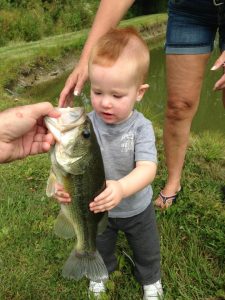
Before you go
For those new to fishing, make sure you have a license before wetting a line. They can be purchased at nearly every sporting goods store.
Resident license fees: annual (ages 16-69), $25; annual (70+), $5; seven day (16+), $12; one day (16+), $5.
Non-resident license fees: annual (ages 16+), $50; seven day (16+), $28; one day (16+), $10.
You’ll also want to be familiar with the rules. There are regulations regarding when certain fish can be targeted or kept, daily catch limits, and types of bait used. Rules can vary by time of year and waterway. Check with the New York State Department of Environmental Conservation to know what is permitted.
Basic gear includes a pole, line, hooks, and lures or bait. Do your research and match your equipment to the fish you’re targeting.
Lastly, don’t forget your sunscreen. Fishing can be a great way to unplug and reap the mental and physical rewards of spending time in nature, but do yourself a favor and limit exposure to the sun.
 The Daily Dose
The Daily Dose
Derrick
I’m new to the Albany area, any direction on finding some crappie?
David Filkins
Upstate New York has many consistently good crappie waters! Check out Saratoga Lake, Round Lake, and Lake Champlain in the Adirondack/Champlain Region. A bit closer to Albany, try the Basic Creek Reservoir, Copake Lake, Kinderhook Lake, Burden Lake, and Snyder’s Lake. As the water warms heading into summer, try outside weed edges with small spinners or a jig or minnow with a bobber. Good luck!
Jack Bennett
Hi David
Thanks for these great tips! I’m in the Prattsville/Lexington area next week – any tips on good (non fly-fishing, as I do not have the tools) fishing around here, this late in the season? I generally prefer lake/pond to river, but would welcome any insight you have. Thanks!
David Filkins
The Schoharie Reservoir holds numerous species and provides shore fishing as well as boat launches. Early fall is a great time as the cooling water signals to many species that it’s time to feed in preparation for winter. Good luck!
Paul Molinari
What a thoroughly enjoyable article! I’ve fished all of my life with my dad (mostly in Maryland and New Jersey), until his death last year at age 83. I’m now living with, and taking care of my 82 year-old mother in North Carolina. Hope I’m fortunate enough to get to wet a line or two in your neck of the woods someday…though I realize that day will likely never come. Still, nice to enjoy the myths and memories of your local lore vicariously through your article. Sounds like a wonderful area to live and fish!
David Filkins
Hi Paul! It brings me great joy to hear about our shared love of fishing. I’m so happy you were able to share this activity with your dad, and I’m very sorry to hear about his passing. Thanks for the wonderful feedback about the article. All my best!